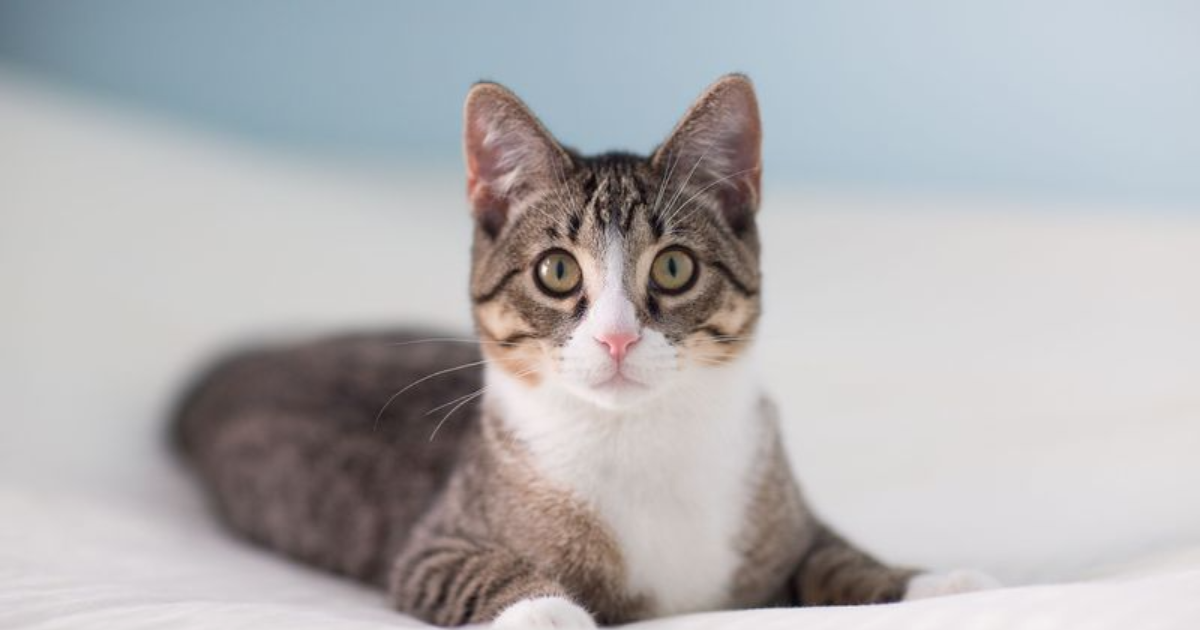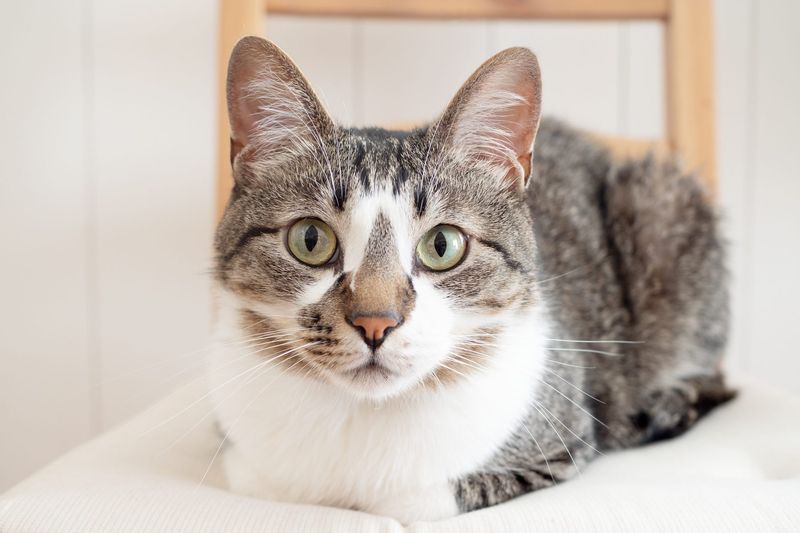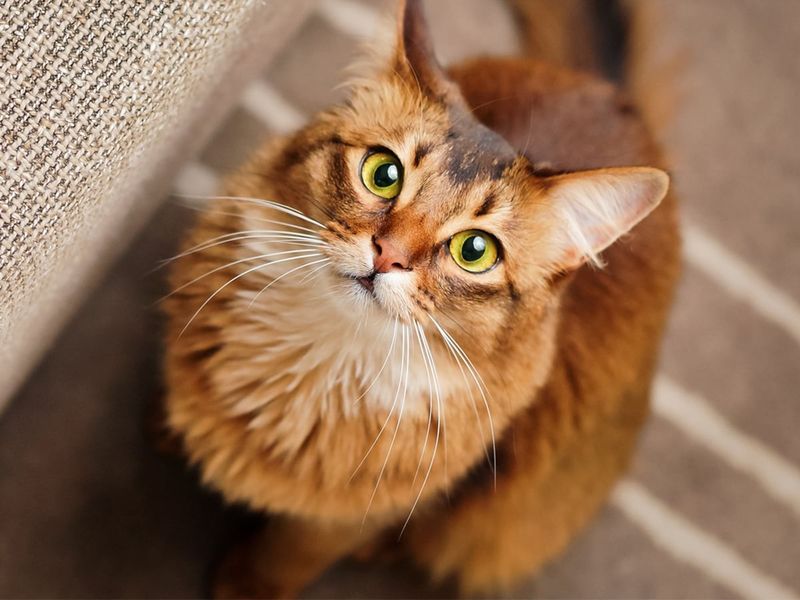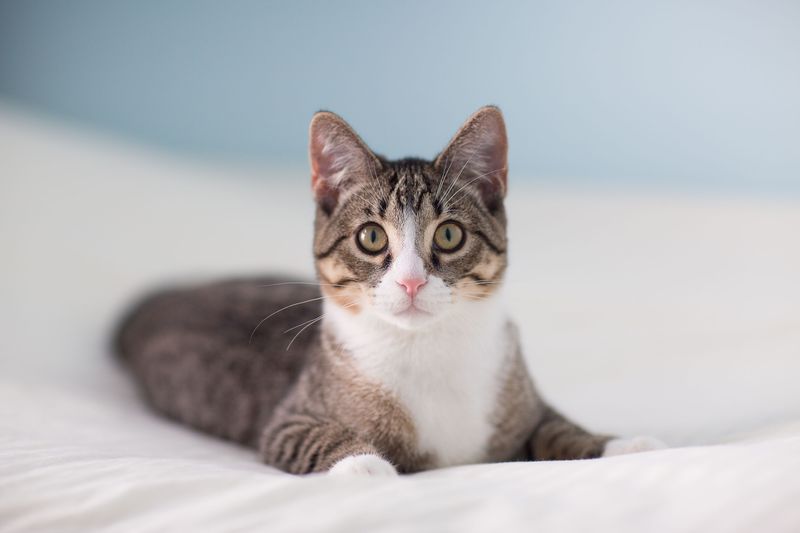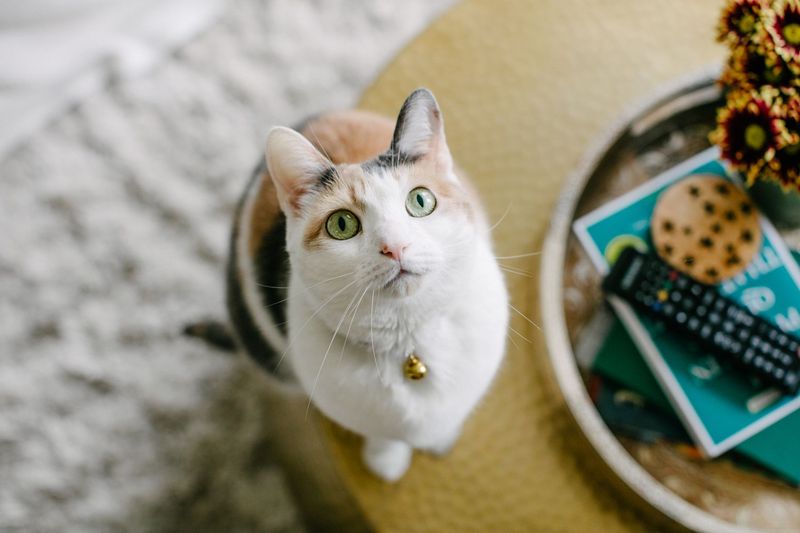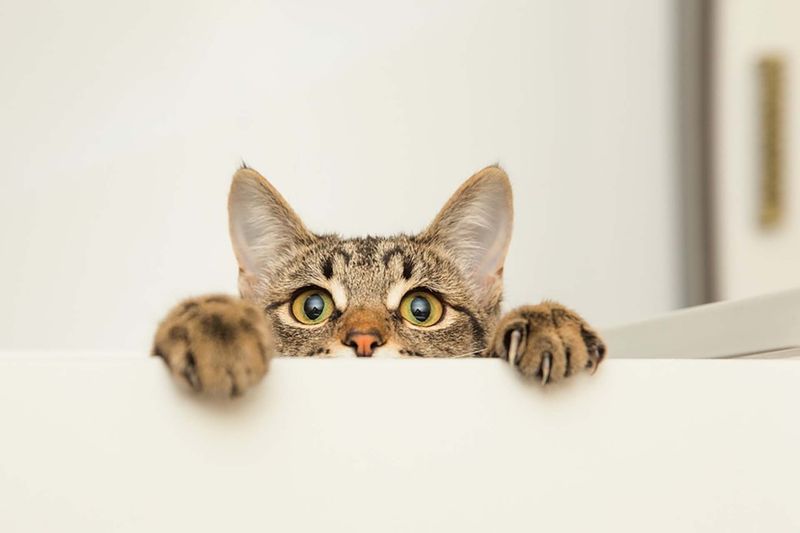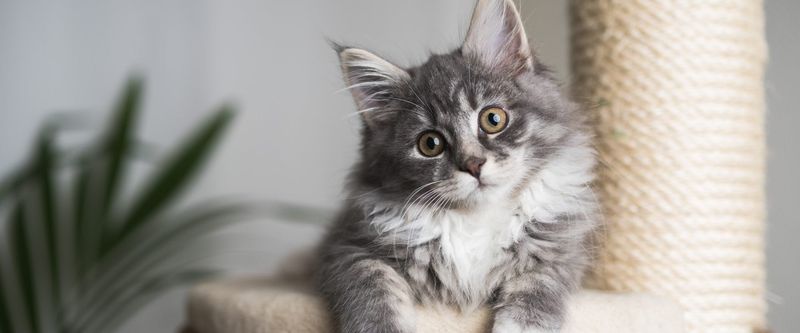📖 Table of Content:
Have you ever caught your cat gazing at you with those piercing, unblinking eyes?
Whether you find it endearing, mysterious, or a little unnerving, this behavior is actually more common than you might think. Cats are known for their curious and sometimes cryptic actions, and prolonged staring is one of the many ways they communicate.
But what exactly does it mean? Is your feline friend plotting their next move, silently judging your every action, or simply seeking your attention?
In this article, we’ll uncover six fascinating reasons why your cat might be staring at you. From affection to hunger cues, these insights will help you decode your cat’s behavior and strengthen the bond with your furry companion.
1. Curiosity and Attention
Cats are naturally curious creatures. When they stare at you, it might just be their way of showing interest in what you’re doing. Your actions, noises, or even your choice of attire might intrigue them.
Sitting in a cozy living room, your feline companion observes your every move with those wide-open eyes. As you move about, their gaze follows, perhaps pondering what fascinating thing you’ll do next.
This curiosity is often mixed with a desire for attention. Cats might be silently requesting you to engage with them. Maybe they’re hoping for a gentle pet, a play session, or simply your company. Understanding this can enrich your bond with your pet, making interactions more fulfilling.
So, next time your cat is intently watching you, try engaging with them—it might be exactly what they’re hoping for.
2. Hunting Instincts
Your kitty’s stare can sometimes be attributed to their innate hunting instincts. Even if they’re well-fed, the urge to observe and track movement remains strong.
In a garden setting, a young, agile cat might fixate its eyes on a moving object—a falling leaf or a distant bird. This behavior is rooted in survival instincts, honing their skills for potential prey.
Indoors, this can manifest as their eyes darting towards the slightest movement you make, from your hand reaching for a glass to your foot tapping the floor. By understanding this, you can engage in play that satisfies their hunting needs, using toys that mimic prey movement.
Catering to this instinct not only provides exercise but also stimulates their mental faculties, ensuring a happier, healthier pet.
3. Seeking Connection
Sometimes, a cat’s gaze is a simple yet profound attempt to connect with you. Eye contact can be a powerful form of communication, even for felines.
Imagine a sunlit room where a mature cat sits on the windowsill, locking eyes with their favorite human. This moment of connection is their way of reaching out, expressing feelings of trust and affection.
Such behavior can deepen your relationship, making your bond more meaningful. It’s a quiet, beautiful interaction that speaks volumes. Responding with slow blinks can affirm your affection, as cats often interpret this gesture as a form of ‘cat kiss’.
Engaging in these eye-to-eye conversations allows you to appreciate the unique ways cats communicate, fostering a deeper understanding and appreciation of your furry friend.
4. Feeling Inquisitive
A cat’s stare can often be a sign of their inquisitiveness. When faced with something novel or unfamiliar, their first response is often to study it intensely.
Picture a young cat in a living room, head tilted, eyes wide, observing a new, intriguing object. This intense focus helps them assess whether it’s friend or foe, edible or something to ignore.
As they learn about their environment, such behavior is crucial for their development. Encouraging this curiosity through safe exploration can enhance their confidence and adaptability.
By providing new stimuli—whether toys, objects, or even rearranging furniture—you can keep their minds sharp and engaged. This engagement is not only entertaining for them but also enriches their overall well-being.
5. Expressing Hunger
Do you ever find your cat staring at you around mealtime? Those eager eyes could be a clear signal of hunger. Cats quickly learn to associate their humans with food delivery.
In a bustling kitchen, a hungry cat sits expectantly near an empty food bowl, eyes fixed on their human, silently demanding a meal. This stare is not just a request but a reminder of their reliance on you for nourishment.
Understanding this cue can help you maintain a consistent feeding schedule, ensuring your pet’s dietary needs are met. Regular mealtimes not only prevent hunger-induced anxiety but also contribute to a stable routine that benefits both of you.
By acknowledging these signals, you choose to strengthen your communication, providing for their needs and reinforcing your role as a loving caregiver.
6. Displaying Affection
Cats have their own unique ways of displaying affection, and staring is one of them. It’s their version of saying, ‘I adore you’.
Envision an affectionate cat sitting comfortably on a lap, looking up with gentle eyes. This connection is a testament to the bond shared, showing trust and love.
Unlike dogs, cats often express their feelings subtly. A soft gaze can be more telling than loud purrs or demanding meows. Recognizing this form of affection enriches the companionship you share.
Responding to their loving gaze with gentle strokes or soothing words can nurture this affectionate behavior. It assures them of your love and strengthens the emotional connection. This mutual exchange of affection is a cornerstone of a rewarding relationship with your feline friend.
